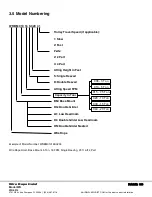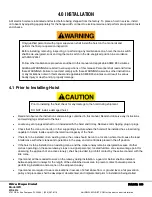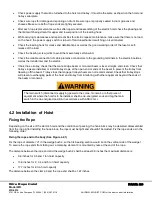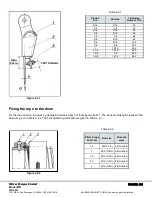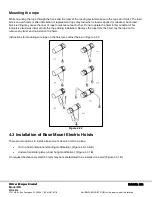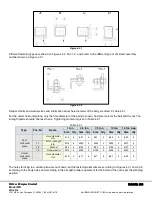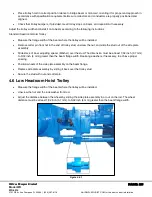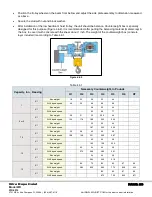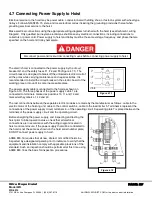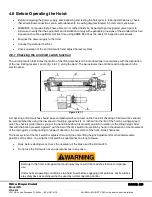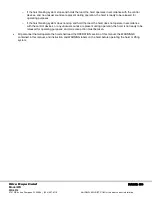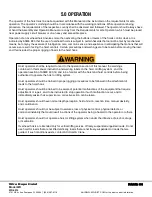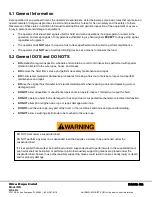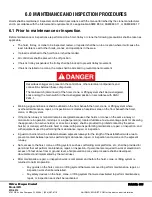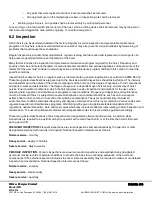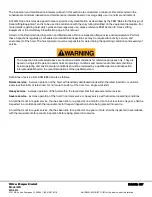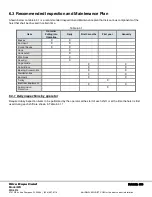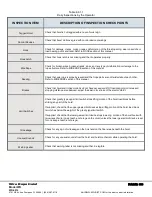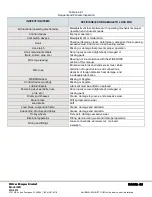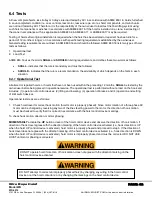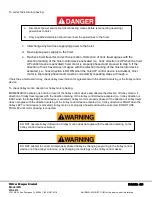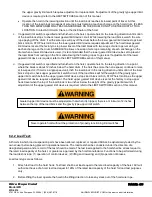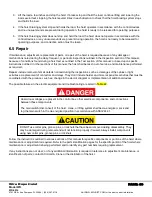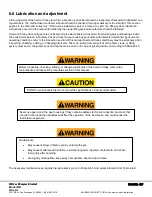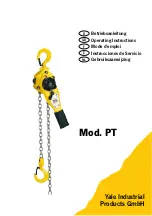
Wire Rope Hoist
PAGE: 32
Model WR
WR-0214
2721 NE 4
th
Ave Pompano FL, 33064 | (954) 367-6116
Visit WWW.ACIHOIST.COM for the most current information
5.1 General Information
Safe operation of an overhead hoist is the operator's responsibility. Listed below are some basic rules that can make an
operator aware of dangerous practices to avoid and precautions to take for his own safety and the safety of others.
Observance of these rules, in addition to frequent examinations and periodic inspection of the equipment, may save
injury to personnel and damage to equipment.
The operator shall know hand signals used for hoist and crane operations if a signal-person is used in the
operation, and accept signals of only persons authorized to give hand signals
EXCEPT
to obey a stop signal
regardless who gives it.
The operator shall
NOT
adjust or repair a hoist unless qualified and authorized to perform maintenance.
The operator shall
NOT
use a hoist load limiting devices as a means to measure the load.
5.2 General DO’S and DO NOT’S
DO
establish a regular inspection schedule and maintain a record of all inspections performed with special
attention directed to the wire ropes, hooks, and breaks.
DO
remove the hoist from service and perform necessary maintenance and repair.
DO
follow recommended maintenance procedures for taking a hoist out of service to inspect and perform
maintenance and repair.
DO
use the original hoist manufacture’s recommended parts when repairing a hoist and replacing worn or
damaged parts.
DO NOT
allow unqualified or unauthorized personnel to operate, inspect, maintain, or repair the hoist.
DO NOT
operate a hoist that is damaged or has any actual or suspected mechanical or electrical malfunction.
DO NOT
attempt to lengthen wire rope or repair damaged wire rope.
DO NOT
use the wire rope, any part of the hoist, or the load block and hook as a ground for welding.
DO NOT
allow a welding electrotrode to be touched to the wire rope.
DO NOT walk under a suspended load.
DO NOT perform any work on a suspended load that requires a worker to be positioned under the
suspended load.
If it is essential that a worker be positioned under a suspended load to perform work in the suspended load;
such work shall not be started or performed until other auxiliary supporting means are placed under the
suspended load. Failure to use other auxiliary supporting means could result in serious bodily injury or death,
and/or property damage.

